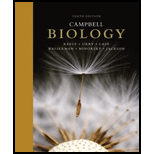
Concept explainers
Sensory receptors transduce stimulus energy and transmit signals to the central nervous system (pp. 1106-1 110)

n The detection of a stimulus precedes sensory transduction, the change in the membrane potential of a sensory receptor in response to a stimulus. The resulting receptor potential controls transmission of action potentials to the CNS, where sensory information is integrated to generate perceptions. The frequency of action potentials in an axon and the number of axons activated determine stimulus strength. The identity of the axon carrying the signal encodes the nature or quality of the stimulus.
n Mechanoreceptors respond to stimuli such as pressure, touch, stretch, motion, and sound. Chemoreceptors detect either total solute concentrations or specific molecules.
To simplify sensory receptor classification, why might it make sense to eliminate nociceptors as a distinct class?
To determine: The reason why it makes sense to classify nociceptors as a distinct class of sensory receptors.
Introduction:
Nociceptors are the sensory receptors that respond to threat stimuli. They are also called pain receptors because they sense any threat to the body and then alarm the brain and spinal cord. They are free nerve endings of a sensory neuron, and they are found in every tissue. When the electric current generated by the neurons reaches above the threshold value, nociceptors get activated and send signals to the central nervous system.
Explanation of Solution
In response to any kind of threat or pain, sensory neurons transmit the signals to interneurons in the spinal cord for the integration of these signals. Substance P is the neurotransmitter that stimulates the interneurons, which carry the signals to the spinal cord. The spinal cord then sends the signals to the brain and the thalamus and the perception of the pain starts. The nociceptors are similar with the other classes of receptors by the kind of stimulus they recognize but are different from the other classes of receptors in the way they recognize the stimulus. Hence, it creates a sense to “eliminate nociceptors as a distinct class of receptors”.
Want to see more full solutions like this?
Chapter 50 Solutions
Campbell Biology (10th Edition)
- Can you described the image? Can you explain the question as well their answer and how to get to an answer to an problem like this?arrow_forwardglg 112 mid unit assignment Identifying melting processesarrow_forwardGive only the mode of inheritance consistent with all three pedigrees and only two reasons that support this, nothing more, (it shouldn't take too long)arrow_forward
- Oarrow_forwardDescribe the principle of homeostasis.arrow_forwardExplain how the hormones of the glands listed below travel around the body to target organs and tissues : Pituitary gland Hypothalamus Thyroid Parathyroid Adrenal Pineal Pancreas(islets of langerhans) Gonads (testes and ovaries) Placentaarrow_forward
- What are the functions of the hormones produced in the glands listed below: Pituitary gland Hypothalamus Thyroid Parathyroid Adrenal Pineal Pancreas(islets of langerhans) Gonads (testes and ovaries) Placentaarrow_forwardDescribe the hormones produced in the glands listed below: Pituitary gland Hypothalamus Thyroid Parathyroid Adrenal Pineal Pancreas(islets of langerhans) Gonads (testes and ovaries) Placentaarrow_forwardPlease help me calculate drug dosage from the following information: Patient weight: 35 pounds, so 15.9 kilograms (got this by dividing 35 pounds by 2.2 kilograms) Drug dose: 0.05mg/kg Drug concentration: 2mg/mLarrow_forward
- A 25-year-old woman presents to the emergency department with a 2-day history of fever, chills, severe headache, and confusion. She recently returned from a trip to sub-Saharan Africa, where she did not take malaria prophylaxis. On examination, she is febrile (39.8°C/103.6°F) and hypotensive. Laboratory studies reveal hemoglobin of 8.0 g/dL, platelet count of 50,000/μL, and evidence of hemoglobinuria. A peripheral blood smear shows ring forms and banana-shaped gametocytes. Which of the following Plasmodium species is most likely responsible for her severe symptoms? A. Plasmodium vivax B. Plasmodium ovale C. Plasmodium malariae D. Plasmodium falciparumarrow_forwardStandard Concentration (caffeine) mg/L Absorbance Reading 10 0.322 20 0.697 40 1.535 60 2.520 80 3.100arrow_forwardPlease draw in the missing answer, thank youarrow_forward
 Human Biology (MindTap Course List)BiologyISBN:9781305112100Author:Cecie Starr, Beverly McMillanPublisher:Cengage Learning
Human Biology (MindTap Course List)BiologyISBN:9781305112100Author:Cecie Starr, Beverly McMillanPublisher:Cengage Learning Human Physiology: From Cells to Systems (MindTap ...BiologyISBN:9781285866932Author:Lauralee SherwoodPublisher:Cengage Learning
Human Physiology: From Cells to Systems (MindTap ...BiologyISBN:9781285866932Author:Lauralee SherwoodPublisher:Cengage Learning Anatomy & PhysiologyBiologyISBN:9781938168130Author:Kelly A. Young, James A. Wise, Peter DeSaix, Dean H. Kruse, Brandon Poe, Eddie Johnson, Jody E. Johnson, Oksana Korol, J. Gordon Betts, Mark WomblePublisher:OpenStax College
Anatomy & PhysiologyBiologyISBN:9781938168130Author:Kelly A. Young, James A. Wise, Peter DeSaix, Dean H. Kruse, Brandon Poe, Eddie Johnson, Jody E. Johnson, Oksana Korol, J. Gordon Betts, Mark WomblePublisher:OpenStax College Biology 2eBiologyISBN:9781947172517Author:Matthew Douglas, Jung Choi, Mary Ann ClarkPublisher:OpenStax
Biology 2eBiologyISBN:9781947172517Author:Matthew Douglas, Jung Choi, Mary Ann ClarkPublisher:OpenStax Principles Of Radiographic Imaging: An Art And A ...Health & NutritionISBN:9781337711067Author:Richard R. Carlton, Arlene M. Adler, Vesna BalacPublisher:Cengage Learning
Principles Of Radiographic Imaging: An Art And A ...Health & NutritionISBN:9781337711067Author:Richard R. Carlton, Arlene M. Adler, Vesna BalacPublisher:Cengage Learning





